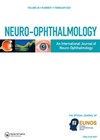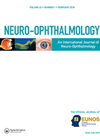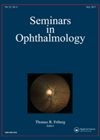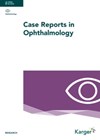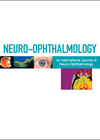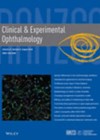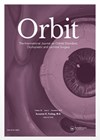
Journal Reviews
Do occult neuroretinitis and non-arteritic anterior ischaemic optic neuropathy differ in presentation?
This study evaluates differences between neuroretinitis and non-arteritic anterior ischaemic optic neuropathy (NAAION) in terms of patient demographics, clinical presentation, and optical coherence tomography (OCT) findings. Medical records of patients with a final diagnosis of occult neuroretinitis or NAAION were...
Rare presentation of giant cell arteritis in Chinese subjects
Only a few case reports of biopsy-proven GCA (BpGCA)-associated vision loss in Chinese subjects have been published. This paper presents three elderly Chinese subjects with BpGCA who presented with vision loss. A search of the literature was also conducted to...
Can coenzyme Q10 have a protective role in ethambutol-induced retinal ganglion cell toxicity
Tuberculosis (TB) is one of the most prevalent infectious diseases, especially in developing or low- income countries. Ethambutol is a widely used drug to treat TB. Ethambutol can cause visual disturbance including ethambutol toxic optic neuropathy (ETON). ETON is one...
Visual prognosis in Irish Leber’s hereditary optic neuropathy
Leber’s hereditary optic neuropathy (LHON) is an inherited optic neuropathy This paper presents a retrospective review of clinical data from patients with LHON presenting to an Irish tertiary referral ophthalmic hospital. Clinical and genetic characteristics were assessed for useful biomarkers...
G-CSF intravitreal injections for NAION: a pilot study
In rodent models with anterior ischemic optic neuropathy (AION), granulocyte colony-stimulating factor (G-CSF) confers a neuroprotective effect on retinal ganglion cells (RGCs) via anti-apoptotic and anti-inflammatory processes. This prospective study investigated the efficacy of intravitreal injection of G-CSF for the...
A retrospective medical notes review in patients with poor vision due to NAION
Very severe visual loss (hand movements or less) is typical of arteritic anterior ischaemic optic neuropathy (AION) and relatively rare in non-arteritic AION (NAION). This study aimed to report the frequency of very poor visual acuity (VA) in NAION. The...
Unusual case presentation of arteritic anterior ischaemic optic neuropathy
The authors present a single case of an 84-year-old man with arteritic anterior ischaemic optic neuropathy, but with unusual features on temporal artery biopsy. He presented with a three-day history of sudden onset of loss of vision in his right...
Unique case of steroid-induced intraocular pressure spike causing NAION
The literature describes previous cases of nonarteritic anterior ischaemic optic neuropathy (NAION) following rapid rises in intraocular pressure (IOP) leading to reduced optic nerve head perfusion and disruption. This is commonly following ophthalmic procedures, acute glaucoma or steroid eye drops....
A novel way to distinguish between types of anterior ischaemic optic neuropathy
The authors evaluate the monocyte to high-density lipoprotein (HDL) ratio (MHR) in patients with arteritic and non arteritic anterior ischaemic optic neuropathy (A-AION / NA-AION). A distinction between the two types of AION is essential to begin appropriate treatment, which...
A novel way to diagnose optic neuropathies using Bruch’s membrane opening
Differential diagnosis of optic neuropathies can be challenging but is crucial for the correct management of the underlying disease and prevention of further damage. Bruch’s membrane opening (BMO) was recently discovered as the anatomical border of the optic disc. BMO...
Prognostic factors for visual acuity in patients with LHON after gene therapy
This retrospective study investigates prognostic factors affecting the visual acuity after a single intravitreal injection of rAAV2-ND4 gene therapy in 53 patients with Leber’s hereditary optic neuropathy (LHON) with mutation at site 11 778. Patients were reviewed one and three...
OCT-A imaging in Grave’s orbitopathy and orbital decompression
In this case series of 12 patients and 24 orbits, the authors describe the changes in the optic nerve and peripapillary blood vessel density in patients with moderate to severe Grave’s Orbitopathy (GO) undergoing orbital decompression. The patients undergoing orbital...

